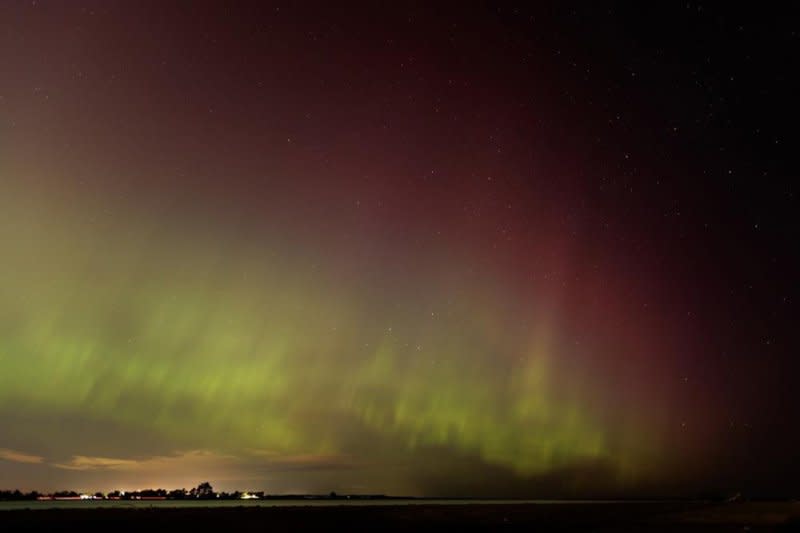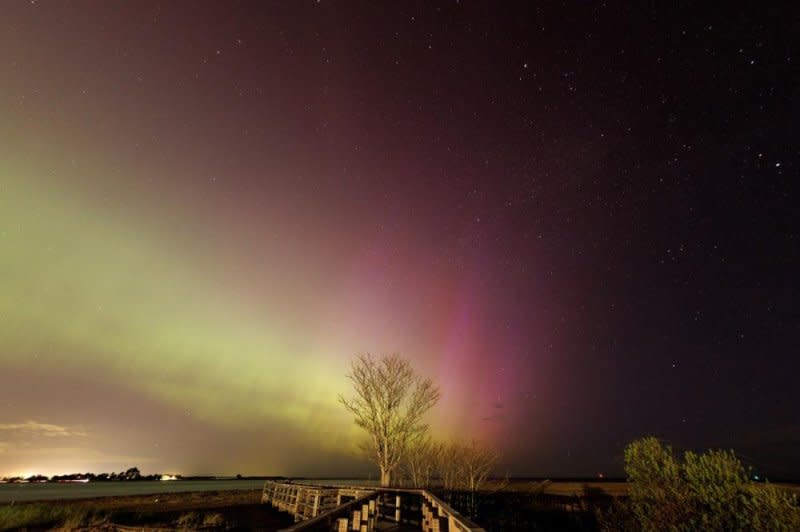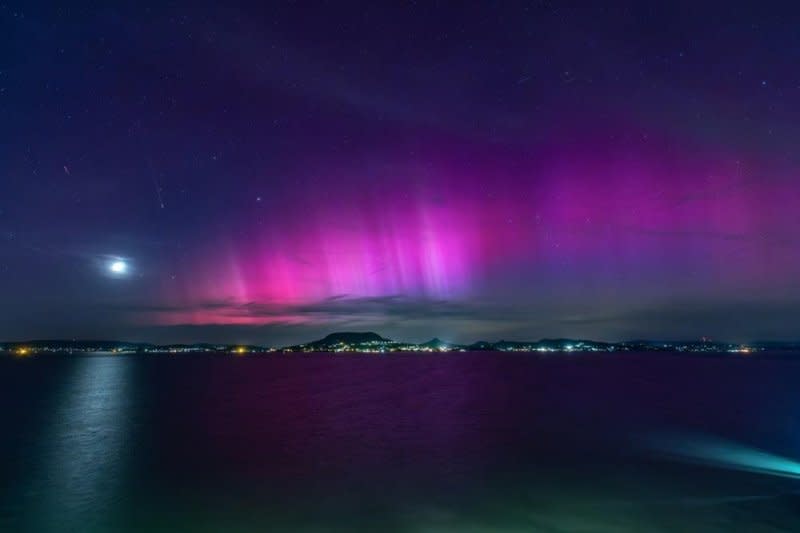Solar storm produces dazzling light show, some power grid issues

May 11 (UPI) -- A solar storm is producing dazzling nighttime light shows in locales where northern and southern lights seldom are visible with some power grid and communications complications.
The coronal mass ejections produce "large expulsions of plasma and magnetic field from the Sun's corona," which has degraded some power grids, high-frequency communications and GPS, according to the National Oceanic and Atmospheric Administration.
"Aurora were visible across much of the United States," NOAA posted on X. "Weather permitting, they may be visible again tonight."
The solar storm produced sightings of the northern lights visible as far south as Alabama, Louisiana and Mississippi, NBC News reported.
Those who can't see the northern lights with just their eyes might be able to use the night sky settings on cell phones to view them with the help of a built-in camera.

"Cell phones are much better than our eyes at capturing light," Brent Gordon, chief of NOAA's Space Weather Services Branch, told reporters Friday. "Just go out your back door and take a picture with a new cell phone and you'd be amazed at what you see."
NOAA issued a G5 alert at 8:38 p.m. EDT Friday, which is the agency's highest alert level for solar storms. It hadn't issued a G5 alert since 2003 and lowered the alert level to G4 by Saturday morning.

The G5 alert says the solar storm's radiation might create dangers for astronauts on the International Space Station, but NASA officials haven't reported any problems.
The ISS includes a shelter for astronauts during such events.
NOAA said the solar storm should continue through Sunday and possibly longer.
The solar storm won't delay the planned May 17 launch of the Boeing Starliner crew flight test.
The extreme geomagnetic storm continues and will persist through at least Sunday... pic.twitter.com/GMDKikl7mA— NOAA Space Weather Prediction Center (@NWSSWPC) May 11, 2024

